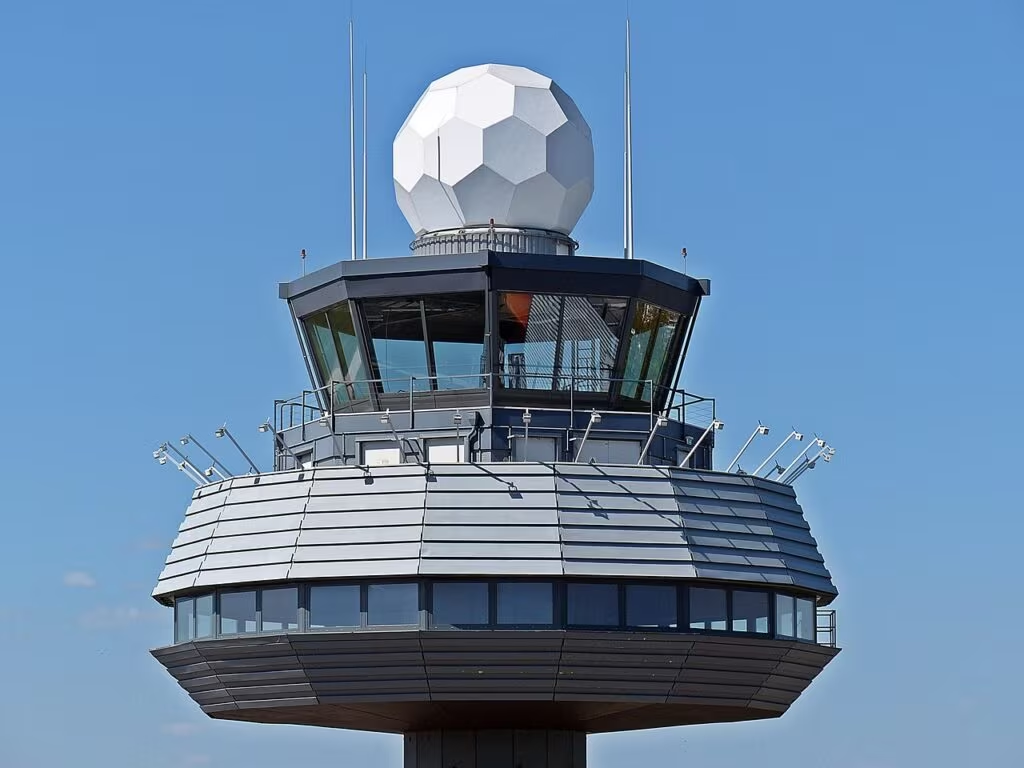Unprecedented Restriction: FAA Grounds General Aviation at Key Hubs
Effective at midnight tonight, November 9, 2025, the Federal Aviation Administration (FAA) has implemented a sweeping and near-total restriction on private jet operations at 12 major airports across the United States. This directive, communicated to the industry via official channels and confirmed by the National Business Aviation Association (NBAA), marks a significant escalation in the use of slot controls to manage air traffic capacity, specifically targeting the General Aviation (GA) sector.
The immediate impact of this ruling is the effective cessation of most transient, charter, and fractional private jet flights at these critical hubs. For operators and high-net-worth travelers relying on the flexibility and convenience of these airports, the sudden halt necessitates immediate and complex logistical adjustments.
This measure is not a temporary delay but a hard stop on non-scheduled operations, signaling a major challenge for the private aviation industry as it navigates increasing congestion in high-demand metropolitan areas.
Understanding the Scope of the FAA’s Directive
The FAA’s action, while severe, is aimed at alleviating extreme congestion and managing limited airspace capacity, particularly during periods of high demand or operational constraints. The restriction applies primarily to Part 91 (non-commercial) and Part 135 (charter) operations that are not based at the affected facilities.
The 12 Affected Airports
While the FAA typically communicates these restrictions through Notice to Air Missions (NOTAMs), the specific list of the 12 airports targeted in this directive includes high-volume General Aviation hubs that serve major metropolitan areas. These airports are often characterized by heavy commercial airline traffic alongside significant private jet movements, leading to frequent delays and operational bottlenecks.
Industry experts suggest the list likely includes key reliever airports near major cities where GA traffic is intense, such as Teterboro Airport (TEB) serving the New York area, Van Nuys Airport (VNY) in Los Angeles, and others near Chicago, Miami, and Boston. The selection criteria focus on facilities where GA operations compete directly for limited runway and gate slots with scheduled commercial carriers.

Crucial Exceptions: The Rule for Based Aircraft
The most critical detail for private jet operators is the narrow scope of the exceptions. According to the NBAA’s communication, the halt on operations is not absolute. The primary exception is reserved for:
- Based Aircraft: Aircraft that are permanently domiciled at the affected airport. These operators, who pay fees and maintain hangar space at the facility, are generally permitted to continue operations, though they may still face heightened scrutiny or reduced operational windows.
This distinction severely impacts the vast majority of charter and fractional flights, which involve aircraft flying into or out of these airports from other locations. These transient flights, which constitute the backbone of the private charter market, are effectively barred from landing or taking off at the 12 locations.
“The limitations imposed are extremely restrictive and target the core of the transient charter market. Operators must immediately pivot their logistics to alternative, often less convenient, reliever airports,” stated an industry analyst familiar with the NBAA’s internal communications.
Operational and Economic Implications for Private Aviation
This sudden restriction places immense pressure on the private aviation ecosystem, particularly the large fractional ownership and jet card companies that rely on predictable access to primary airports.
Logistical Nightmare for Charter Operators
Private jet operators must now rapidly reroute flights, leading to several immediate challenges:
- Reliever Airport Reliance: Flights must be diverted to secondary or tertiary airports, which may lack the necessary infrastructure (customs, FBO services, ground transportation) to handle the sudden surge in high-end traffic.
- Increased Ground Transport Time: Passengers will face significantly longer ground transfers to reach their final destinations, negating one of the primary benefits of private travel: speed and convenience.
- Crew and Aircraft Repositioning: Operators face complex logistical puzzles regarding where to base crews and reposition aircraft, increasing operational costs and potentially leading to crew duty time limitations.

Precedent and Future Concerns
While the FAA frequently uses temporary slot restrictions (often via Special Traffic Management Programs or STMPs) for major events like the Super Bowl or UN General Assembly, a broad, near-total halt across 12 major airports is highly unusual and sets a concerning precedent for the General Aviation sector.
This move suggests that the FAA is prioritizing commercial airline efficiency and capacity during peak periods, potentially viewing transient GA traffic as the most expendable element when managing severe congestion. The NBAA is expected to vigorously lobby the FAA to understand the duration and long-term implications of this directive, fearing it could become a permanent tool for capacity control.
Impact on Fractional and Jet Card Programs
Companies offering fractional ownership and jet card programs promise guaranteed access to preferred airports. This restriction directly challenges that guarantee, forcing these providers to absorb the costs and inconvenience of rerouting, or potentially face customer dissatisfaction and contract disputes if they cannot maintain service levels.
For travelers and operators, immediate action and clear communication are paramount. The industry must adapt quickly to ensure continuity of service, even if it means sacrificing some convenience.
Advice for Operators and Pilots
Operators must meticulously review the specific NOTAMs issued for the 12 affected airports. Key actions include:
- Verify Based Status: Confirming the exact definition of “based aircraft” as applied by the local airport authority and the FAA for that specific NOTAM.
- Secure Alternative Slots: Proactively securing slots at nearby reliever airports (e.g., shifting from TEB to Morristown or Westchester in the Northeast).
- Communicate Clearly: Providing clients with transparent information regarding the necessary changes in departure/arrival locations and the resulting increase in ground travel time.
The Role of the NBAA
The NBAA acts as the primary voice for business aviation in discussions with the FAA. Their immediate response, confirming the restrictions and detailing the based aircraft exception, underscores the seriousness of the situation. The association is likely working to:
- Seek Clarification: Obtaining precise details on the duration and necessity of the restrictions.
- Advocate for GA: Arguing for operational flexibility and ensuring that the restrictions do not disproportionately burden essential business travel.
- Disseminate Information: Providing real-time updates to its members to ensure compliance and safety.

Key Takeaways for the Industry
This FAA directive represents a major regulatory hurdle for the private jet sector, emphasizing the growing tension between air traffic capacity and demand.
- Immediate Halt: Nearly all transient private jet operations at 12 major U.S. airports are suspended starting November 9, 2025.
- Sole Exception: Only aircraft officially designated as based aircraft at the specific airport are generally permitted to continue operations.
- Targeted Impact: The restriction primarily affects charter (Part 135) and non-commercial (Part 91) flights that are flying in from other locations.
- Logistical Shift: Operators must immediately reroute flights to secondary reliever airports, increasing operational complexity and ground travel for passengers.
- Precedent Set: This broad action signals a potential shift in FAA policy, prioritizing commercial airline efficiency over General Aviation access during periods of high congestion.
Conclusion: A Test of Industry Resilience
The FAA’s decision to effectively halt non-based private jet traffic at 12 key hubs is a powerful reminder of the regulatory environment governing air travel. While the measure aims to improve overall system efficiency, it places a significant burden on the private aviation sector, which prides itself on seamless, door-to-door service.
Operators who can swiftly and efficiently manage the transition to alternative airports, while maintaining high service standards, will be best positioned to weather this disruption. The industry now awaits further clarification from the FAA regarding the duration of these restrictions and whether similar measures will be implemented in the future to manage capacity in increasingly crowded airspace.
What’s Next
The focus shifts immediately to the NBAA and other industry advocacy groups, which will be engaging with the FAA to negotiate operational relief and ensure that the restrictions are temporary and narrowly tailored. Operators must remain vigilant, monitoring NOTAMs for updates and preparing contingency plans for sustained operational changes well beyond the initial implementation date of November 9, 2025.
Original author: Doug Gollan
Originally published: November 10, 2025
Editorial note: Our team reviewed and enhanced this coverage with AI-assisted tools and human editing to add helpful context while preserving verified facts and quotations from the original source.
We encourage you to consult the publisher above for the complete report and to reach out if you spot inaccuracies or compliance concerns.

